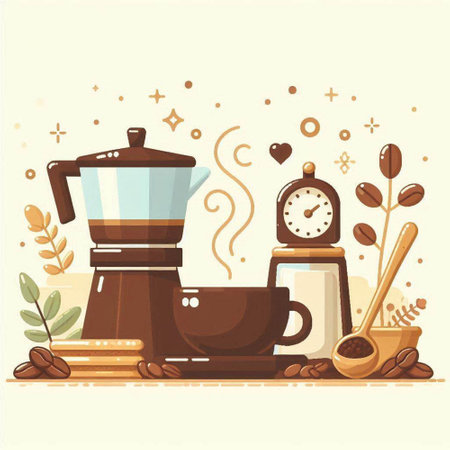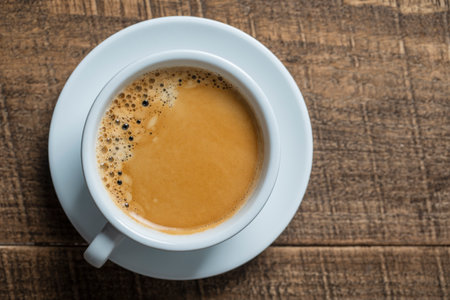1. Introduction: A Nation of Brews
As a mum living in the heart of Britain, I can tell you there’s something truly special about gathering round the kitchen table for a warm cuppa. For generations, tea has been at the very heart of British daily life, woven into everything from family chats to afternoon rituals. Whether it’s a builder’s brew to start the morning or a delicate Earl Grey with a slice of cake, tea is more than just a drink—it’s a comforting embrace and a symbol of togetherness. Yet, over the past few decades, coffee has begun to make its mark on our high streets and in our homes, bringing with it new flavours, aromas, and even café culture. The evolution from traditional tea times to bustling coffee shops reveals so much about how British society cherishes its warm drinks and adapts to fresh influences while holding tight to beloved traditions.
2. A Historical Brew: The Origins of Tea and Coffee in Britain
When we think of a comforting cuppa or a lively coffee catch-up, it’s easy to forget that both tea and coffee were once exotic newcomers to British shores. Their stories are as rich and fascinating as the beverages themselves, each weaving into the fabric of British culture in unique ways.
The Arrival of Tea and Coffee in the UK
Coffee was the first to make its entrance, arriving from the Ottoman Empire in the mid-17th century. It quickly became popular among merchants, scholars, and curious Londoners eager for novelty. Just a few decades later, tea followed suit, imported by the East India Company from China. At first, both drinks were luxuries enjoyed mainly by the wealthy, but their popularity spread rapidly.
The Rise of Coffee Houses
By the late 1600s, coffee houses had sprung up across London—places where people gathered not just for a drink but also to exchange news, debate politics, and socialise. These vibrant hubs earned nicknames like “penny universities” because, for the price of a cup, anyone could join lively discussions with people from all walks of life.
Coffee Houses vs Tea Drinking: A Comparison
| Coffee | Tea | |
|---|---|---|
| Arrival in Britain | Mid-17th century (from Ottoman Empire) | Late 17th century (via East India Company) |
| Main Venues | Coffee houses (public gathering spaces) | Private homes (initially aristocracy) |
| Early Social Impact | Debate, news sharing, business deals | Symbol of refinement and domestic comfort |
| Accessibility Over Time | Became common among middle classes | Became a household staple for all classes |
Tea’s Ascent as a British Staple
While coffee houses flourished for a time, tea gradually stole the spotlight. Its association with elegance and family life made it especially appealing to women—who were often excluded from coffee houses—and soon it became central to British hospitality. By the 18th century, tea had cemented its place as a daily ritual across all levels of society.
A Cosy Tradition Begins
The transformation from exclusive treat to everyday necessity set the stage for Britain’s enduring love affair with tea. Whether enjoyed during a quiet moment at home or shared with friends over biscuits, tea became woven into the very heart of British life—a tradition many families still cherish today.

3. Class, Rituals, and Identity
When we talk about tea and coffee in Britain, it’s impossible not to notice how both drinks have become tied to social class, daily rituals, and our very sense of Britishness. For generations, tea has been the backbone of British society—a comforting constant across all walks of life, but especially so in the rituals of afternoon tea. This tradition, with its delicate china, scones and finger sandwiches, was once the preserve of the upper and middle classes. Afternoon tea wasn’t just a drink; it was a social event, a chance to display etiquette and refinement.
Meanwhile, the working class developed their own cherished custom: the builder’s brew. This strong, no-nonsense cup of tea—usually made with a teabag left to steep for ages and plenty of milk—became synonymous with hard graft and honest labour. The humble mug of builder’s tea is as much a symbol of British resilience as it is a daily pick-me-up on chilly mornings or during breaks on construction sites.
Coffee, for many years considered a more exotic choice, began to shift its reputation in Britain during the late 20th century. As continental-style cafes sprang up in cities across the UK, coffee became associated with a certain cosmopolitan flair. Sipping an espresso at a pavement café in London or Manchester started to feel rather sophisticated—a nod towards European chic that appealed particularly to younger generations and urban professionals seeking something different from their parents’ well-loved cuppas.
The evolution of these rituals reflects deeper questions about identity. Is your heart warmed by the idea of sharing stories over tea with family after school? Or do you feel at home perched on a high stool, latte in hand, chatting with friends or working remotely? Whether you lean towards tea or coffee often says something about where you’re from and how you see yourself within modern British society—and as any mum will tell you, there’s room for both in our kitchens and our hearts!
4. Coffee’s Modern Resurgence
If you’ve been out and about on the British high street lately, you’ll have noticed just how much things have changed. Where once the smell of fresh tea might have drifted from a neighbour’s home, now it’s the inviting aroma of barista-brewed coffee that fills the air. Over the past two decades, Britain has truly embraced a coffee culture that would have seemed almost unthinkable to our grandparents.
The rise in popularity of coffee is plain to see with chains like Costa, Starbucks, and Caffè Nero becoming household names. Independent coffee shops are thriving as well, each offering their own cosy corners and unique blends. It’s not just about grabbing a quick cup on your way to work anymore; for many families and friends, popping out for a latte or cappuccino has become a cherished social ritual—something we mums can absolutely relate to when looking for a little “me time”!
The High Street Coffee Boom
| Year | Number of UK Coffee Shops | Popular Drink Choices |
|---|---|---|
| 2000 | ~6,000 | Tea, Filter Coffee |
| 2010 | ~12,000 | Cappuccino, Latte |
| 2023 | ~25,000+ | Flat White, Cold Brew, Plant-based Options |
This incredible growth reflects more than just changing tastes—it shows how British people are adapting continental coffee habits to suit our own preferences. We might love an Italian espresso or a French café au lait when on holiday, but at home we tend to linger over a milky flat white or sip oat milk lattes while catching up with friends. Even our cakes and pastries are changing to match: think banana bread or vegan brownies alongside your favourite brew.
Adapting Continental Habits with a British Twist
The British version of coffee culture values comfort and community just as much as convenience. Whether it’s meeting other mums after school drop-off or treating yourself during a shopping trip, these new coffee rituals offer a modern way to connect while still holding onto our love of a good natter. And let’s be honest—sometimes only a strong cup of coffee will do when you’re running after little ones all day!
5. Tea’s Enduring Charm
If there’s one thing that truly warms the heart of a British home, it’s a good old cuppa. No matter how trendy coffee shops become or how adventurous our palates may grow, tea retains a special place at the centre of British life. For generations, families have gathered around the kitchen table, sharing stories and worries over steaming mugs of tea. It isn’t just a drink—it’s a ritual, a moment to pause and reconnect with loved ones. From those early morning brews to the comforting afternoon pick-me-up, tea has an uncanny ability to soothe nerves and bring a sense of calm when the day feels overwhelming.
Every family has their cherished traditions—perhaps it’s grandma’s teapot that only comes out on Sundays, or the way everyone insists on their own favourite biscuit for dunking. These little rituals form the backbone of daily life, weaving together memories and providing comfort through every season. And let’s not forget those big moments too! Whether it’s celebrating exam results, welcoming a new baby, or even dealing with loss, someone always puts the kettle on. That simple act speaks volumes about care and togetherness—a warm embrace in liquid form.
Even as coffee culture gains ground, there is something about tea that feels inherently British. It is gentle, familiar, and endlessly adaptable—just like us mums who know exactly how strong each family member likes theirs! In times of joy or challenge, you can be sure that an essential cuppa will be close at hand, quietly reminding us all that sometimes, the simplest comforts are the most enduring.
6. The Friendly Debate Today
As a mum who has shared countless cups of both tea and coffee with friends and family, I find it truly heartening to see how the age-old debate between these two beloved beverages has evolved into a gentle, good-natured conversation. In modern British society, the rivalry between coffee and tea is less about competition and more about celebrating choice and togetherness. Across the UK, you’ll find that certain regions still hold fast to their traditional preferences—Yorkshire’s love for a strong brew of tea is legendary, while cosmopolitan cities like London have embraced artisan coffee culture with open arms. Yet, in most homes, including ours, both drinks now sit happily side by side on the kitchen counter. There’s something special about asking visitors if they’d prefer a cuppa or a coffee—the answer always sparks a little chat, often accompanied by fond stories. My own children, for example, delight in helping me make “tea for Gran” and “coffee for Dad” on lazy Sunday mornings, turning our kitchen into a warm hub where everyone’s tastes are welcomed. Families up and down the country share similar anecdotes: grandparents introducing grandchildren to their first milky tea, or parents bonding over frothy cappuccinos after school drop-off. This friendly debate isn’t about which drink is better—it’s about creating moments of connection, honouring old traditions while embracing new ones, and recognising that both coffee and tea have woven themselves beautifully into the fabric of British life.
7. Conclusion: More Than Just a Drink
As we look back at the evolution of the coffee versus tea debate in British society, it becomes clear that these two beloved beverages are so much more than just drinks—they are woven into the very fabric of our daily lives and traditions. Whether you’re sharing a pot of strong English breakfast tea with your mum on a rainy afternoon, or catching up with friends over a frothy cappuccino at your favourite local café, both tea and coffee have found their own special place in our hearts and homes. From Sunday family gatherings to those precious five-minute breaks during a busy day, these simple rituals bring us together, spark laughter, and create moments of warmth. So, whether you’re team tea or team coffee (or perhaps like me, enjoy a bit of both!), let’s celebrate the joy and comfort they add to our everyday chats and relationships—because here in Britain, a good brew always means so much more than what’s in your cup.


